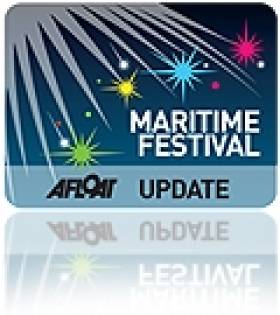Displaying items by tag: Tallship Belem
#QUEENS RIVER PAGEANT – The oldest operating tallship in Europe, Belem built in 1896 and once owned by the family of the Guinness brewing dynasty, is to take pride of place in Queen Elizabeth's Diamond Jubilee River Pageant on the Thames tomorrow, writes Jehan Ashmore.
An estimated 1 million people are expected to witness the Queen on the Royal barge as its heads downriver through London. The historic occasion will be one of the most impressive parades ever staged on the river, which sets off from Battersea to Tower Bridge.
Accompanying the royal barge will be an extensive flotilla of more than a thousand vessels representing craft of all shapes and sizes gathered together from the UK and Commonwealth. The flotilla will pass through an avenue of sails and a gun salute will mark the spectacle which starts at 2pm and is scheduled to take four hours to complete.
Belem's prominence in the entourage stems from the eve of World War I, where the French cargo ship ended her days when handed over for the first time under the UK flag. Belem became the property of Duke of Westminster who had her totally refurbished and turned into a luxury yacht for 40 guests.
She was sold to Sir Arther Ernest Guinness in 1921 and renamed Fantôme II. The affinity to which he showed to the yacht was so strong that a small deckhouse office was built as an extension of the original, so that business could continue at sea, which included a round the world voyage.
Before her current owners the Belem Foundation, she was used as an Italian sail-training ship under the name Giorgio Cini after WWII until 1965 and in which she continues in such a role to the present day. The vessel will pay homage during the parade, to recognise the preservation of the vessel and the 'Entente Cordiale'. Her historical significance is also recognised as the French government classified her as a historical monument.
In 2010 she was chartered to make a special voyage to Dublin to celebrate the 50th Anniversary of Alliance Française in the capital. During a four-day visit, Bastille Day was celebrated while moored close to the National Convention Centre for the inaugural French Market.
Not forgetting that during her original career as a cargoship which included nearly two decades crossing the Atlantic to the north Brazilian port of Belem. She carried a diverse range of cargo including cocoa beans that were carried along the Seine for a Paris-based chocolate-maker.
Her cargo-carrying career returned in recent years which included a symbolic small consignment of wine to Dublin followed by larger commercial cargo from Bordeaux to Montreal in the Canadian French speaking province of Quebec.
























































